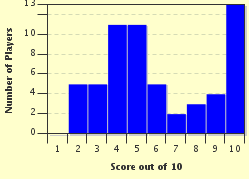Quiz Answer Key and Fun Facts
1. In ancient times, each Greek city-state had its own unique design that served to identify the coinage of that city. For example, Ephesus used a honeybee, and Corinth used the flying horse, Pegasus. Which city used an owl on its coins?
2. In 42 BC, the Roman moneyer Lucius Plaetorius Cestianus struck a silver coin called a denarius, which showed a bust of Marcus Junius Brutus on one side, and two daggers and a "liberty cap" on the other. What famous event did this coin commemorate?
3. Another famous Roman coin shows a Roman war galley on one side, and a Roman "Eagle" between two standards on the other. There is an inscription that reads "ANT AVG III VIR R P C." Who is is responsible for producing these famous coins?
4. There is a silver denarius of the emperor Tiberius, with his portrait on the obverse, and his mother, Livia, seated on the reverse, with the inscription, "Pontif Maxim." Many people believe that this is the coin that Jesus held up when he uttered the famous words, "Render unto Caesar the things that are Caesar's, and unto God the things that are God's." What do collectors call this coin?
5. Lepta and prutahs were very small bronze coins issued by Jewish kings and Roman governors of Judea from the second century BC through the second century AD. By what name are these coins better known?
6. Alexander the Great was the first living person to have his portrait appear on a coin.
7. Europeans were not the only people making and using coins in the ancient world. Around 260 BC the Chinese began producing round metal coins with a round or square hole in the middle, a form of coinage that continued for over 2000 years, and sounds like a word that is synonymous with money. What are these coins collectively called?
8. Constantine the Great is famous for being the first Roman emperor to recognize Christianity - whether he himself ever became a Christian is still subject to debate. But it is on a coin of his that we find the first Christian symbol on a Roman coin. It wasn't a cross, however. What was it?
9. The figure of Britannia, which appeared at various times on British pennies and halfpennies from 1672 until decimalization, was copied from an ancient Roman coin.
10. Near the end of his reign in 363 AD, the Roman emperor Julian II issued a large bronze coin called a double majorina. The reverse of the coin showed a bull with two stars over it, and the legend "Securitas Repub" (the security of the republic). What is the significance of this coin?
Source: Author
daver852
This quiz was reviewed by FunTrivia editor
WesleyCrusher before going online.
Any errors found in FunTrivia content are routinely corrected through our feedback system.

